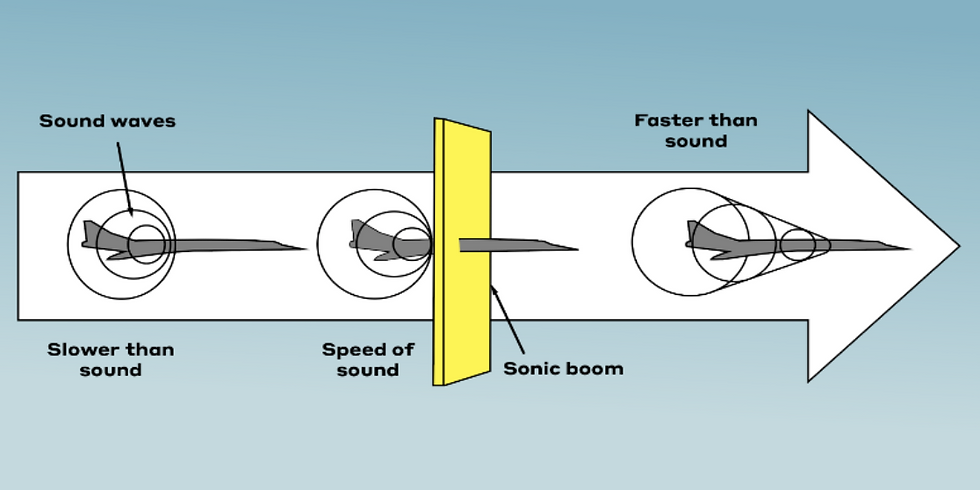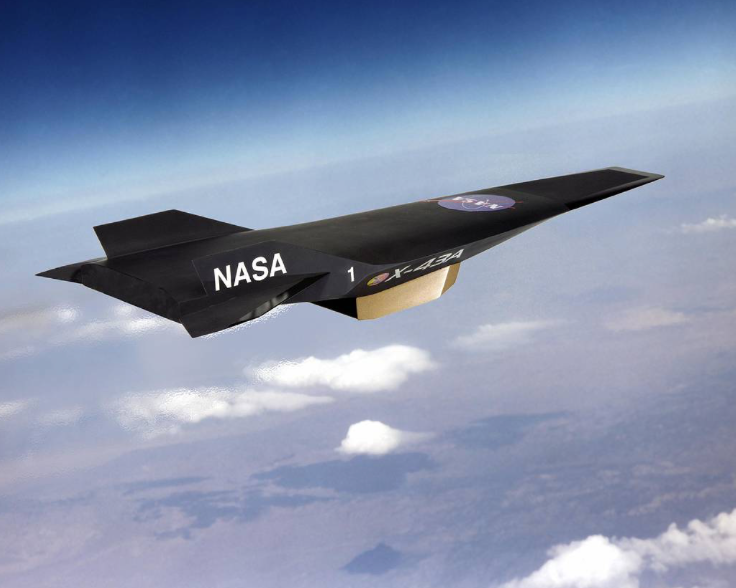Subsonic, Supersonic and Hypersonic Flow
- Krish Pesswani
- Feb 5
- 4 min read
Updated: Apr 2
Today on AeroIntellect, we will explore the science of subsonic, supersonic, and hypersonic flow—where aircraft push the limits and shatter the sound barrier.
In aerospace engineering, subsonic, supersonic, and hypersonic flow refers to different regimes of airflow based on the Mach number, which is the ratio of an object's speed to the speed of sound in the given medium. Each regime has distinct aerodynamic characteristics and engineering challenges.
Subsonic Flight

Subsonic flow refers to the airflow around the entire aircraft to be below the speed of sound. At sea level, sound typically travels at about 767mph, which is known as "Mach 1". Subsonic airplanes include commercial airlines, such as Airbus A320, and types of UAVs and drones designed for efficiency rather than speed. These subsonic aircraft fly at around Mach 0.6 to Mach 0.9.
As the aircraft's speed is slower than the speed of sound, the air ahead of the aircraft is "warned" of its approach before it actually reaches that point. Furthermore, since pressure waves spread smoothly in all directions, the surrounding air has time to adjust gradually to the presence of the moving aircraft, allowing the airflow to remain smooth and behave in a predictable manner.
The primary concern for aerodynamics in subsonic flow is the pressure differential across the airfoil, which generates lift and drag caused by skin friction and pressure drag and ensures efficient fuel consumption over long distances.
Supersonic Flight
When an aircraft is moving at a supersonic speed, it is moving faster than the soundwaves it creates, typically between Mach 1.2 and Mach 5. Supersonic flow is characterized by shock waves, which are abrupt changes in pressure, temperature, and density. These shock waves form because the object moves faster than the pressure waves it generates, causing the air molecules to compress suddenly.

The sonic boom is one of the most fascinating phenomena associated with supersonic flight. A sonic boom is a loud, thunder-like sound that occurs when an object exceeds the speed of sound. As the aircraft moves through the air, it creates pressure waves that propagate outward in all directions. At supersonic speeds, these waves merge into a single, powerful shock wave that forms a cone-like shape behind the aircraft known as the Mach cone. When this shock wave reaches the ground, it is heard as a sonic boom. The boom is not a one-time event but a continuous effect that follows the aircraft as long as it travels at supersonic speeds.

You must have noticed that the Mach cone has formed from the middle of the aircraft rather than the end; this is because the apex of this cone is at the point where the aircraft first exceeded the speed of sound, typically near the middle of the plane. This is due to the shock waves from different parts of the aircraft (nose, wings, tail) merging into a single, coherent conical wave as the aircraft continues to move forward.
However, supersonic flight poses unique challenges for aircraft design. The formation of shock waves increases drag significantly, requiring powerful engines and specialized aerodynamic shapes to manage the intense forces. In fact, supersonic flights, mainly operated by Concorde back in the 2000s, were stopped for many years due to this reason and other environmental and safety concerns. Although companies such as Boom Supersonic, Concorde, and NASA are still researching and developing supersonic flight. For instance, Boom Supersonics' XB-1 plane recently broke the sound barrier by reaching the speed of Mach 1.05, and likewise, NASA has also mentioned that its X-59 aircraft will soon have its first flight.
Hypersonic Flight
Hypersonic flight refers to airspeeds above Mach 5, or five times at the speed of sound, where the challenges of aerodynamics intensify. Hypersonic vehicles face extreme conditions, including high heat, intense shock waves, and significant pressure changes. At hypersonic speeds, the air behaves almost like a compressible fluid, and the temperature around the aircraft can reach thousands of degrees Celsius due to air friction.
In hypersonic flow, the shock waves are much stronger than in supersonic flow; they create shock layers where the air is significantly compressed and heated. Engineering must design hypersonic vehicles to withstand both the aerodynamic forces and the thermal loads, which often leads to a highly specialized shape, such as blunt bodies that spread the heat over a larger surface area during atmospheric re-entry.

Hypersonic flight is a key area of research for advanced military applications, space exploration, and high-speed travel. Currently, research is advancing in the area of scramjets (supersonic combustion ramjets), engines designed to operate at hypersonic speeds. However, scramjets remain in the experimental stage due to the immense technical challenges of maintaining stable combustion at such high speeds. The following image shows NASA's X-43A, an experimental unmanned hypersonic aircraft with multiple scale variations meant to test various aspects of hypersonic flight. This aircraft reached a speed of Mach 9.6 in November of 2004 after a few failed attempts.
In conclusion, studying subsonic, supersonic, and hypersonic flow is not just an academic exercise—it has real-world implications for aviation, defense, and space exploration. From the smooth efficiency of subsonic commercial flights to the thunderous roar of a sonic boom and the blazing speeds of hypersonic travel, each regime offers unique challenges and opportunities.
Thanks for navigating the world of subsonic, supersonic, and hypersonic flow with me! Stay tuned for next week as we dive into another exciting frontier of aerospace innovation.




Comments